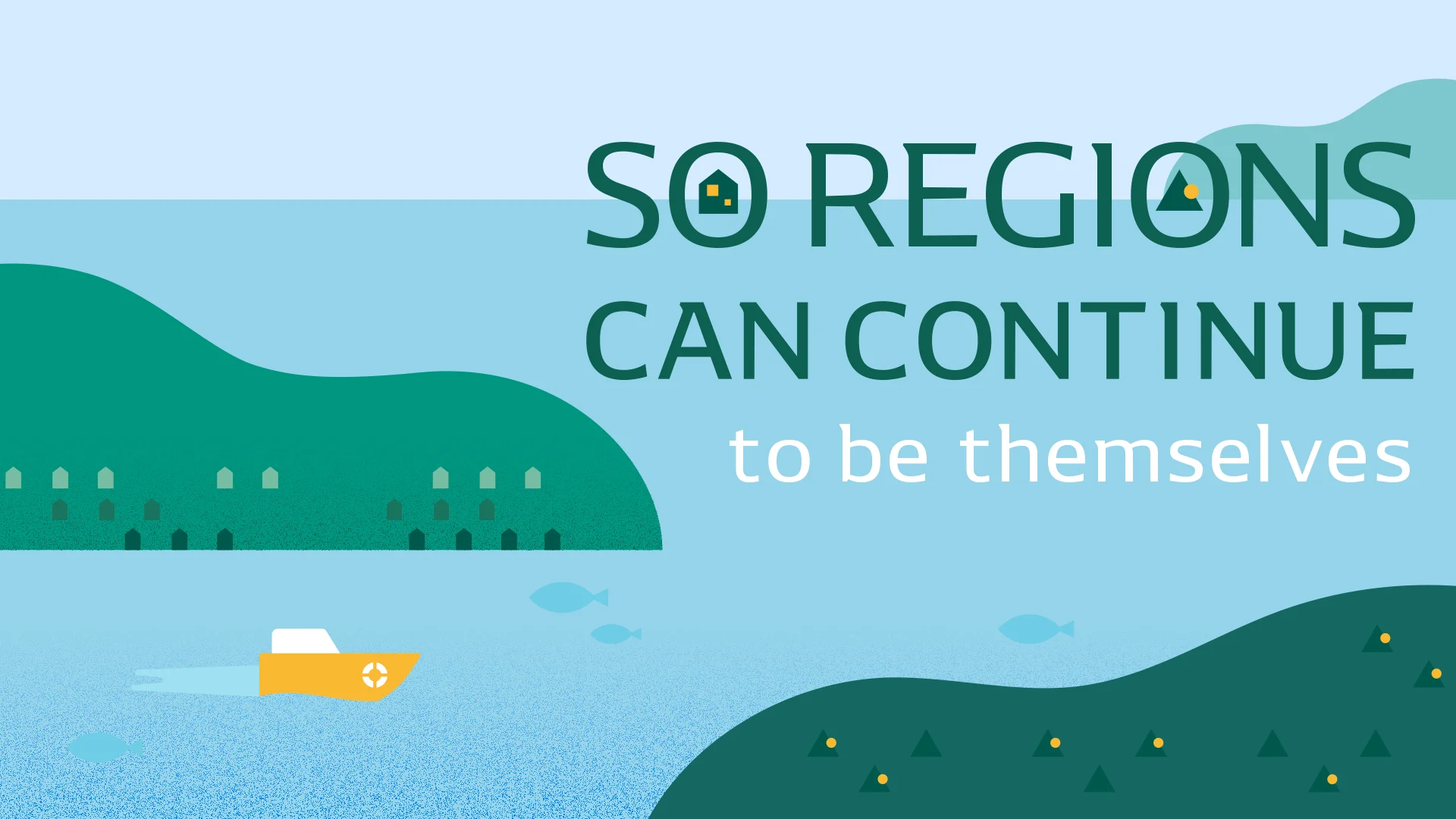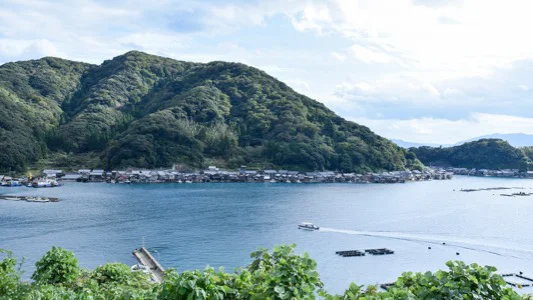Did you find this article helpful for what you want to achieve, learn, or to expand your possibilities? Share your feelings with our editorial team.


Mar 18, 2022
VISION & IDEAHarnessing the town’s strengths not weaknesses
Updates on life in the countryside Hideki Yoshimoto, Mayor of Ine town, and Koichi Sugiyama of DENSO
-

Mayor of Ine Town, Kyoto PrefectureHideki Yoshimoto
His motto is “Rather than focusing on what I lack, I must focus on and make the most of what I have”, and that he tries to polish up and communicate his regional resources to be proud of in the world. And he also would like to create “Ee-machi”, a better regional society, by themselves and to pass it down for the sake of future generations.
-
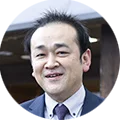
Automotive & Life Solutions Division, DENSO CorporationKoichi Sugiyama
He joined DENSO in 1998. He was involved in the development and the mass production of injectors for gasoline engines, and in the production engineering. And he was transferred to the division of new business, and developed “Lifevision”, the IT service for municipalities.In 2014 he began its sales promotion to the municipalities around Japan, and now supervises this business.
DENSO’s “Lifevision” platform was developed as a tool to help solve community problems throughout Japan. It has been introduced as an information infrastructure system to connect municipal governments and their citizens, and is currently used by 49 municipalities throughout the nation. Ine town, which is located in the northernmost area of Kyoto Prefecture, leads the proactive utilizing of the Lifevision.
Why was the Lifevision necessary and introduced to this small Ine town with less than 2000 population? What does Yoshimoto think of the better future of the aging and underpopulated rural areas? Sugiyama, the project leader of the Lifevision, is going to think what makes the rural life richer and more comfortable with Yoshimoto while interviewing him.
Contents of this article
Small population, big community power
Koichi Sugiyama:Thank you for taking the time to talk with me today. Could you start by quickly introducing Ine town and explaining what kind of place it is?
Hideki Yoshimoto:Certainly. Starting with the basic figures, the total area of the town is 62 square kilometers (about 24 square miles), and roughly 80 percent of that is covered by mountains and forests. Small settlements are scattered throughout the town, and the total population is just under 2,000, of which senior citizens will soon account for over 50 percent. In other words, it’s a typical Japanese rural town with a declining birthrate and aging population.

Our key industries are agriculture and fishing. And tourist industry is also one of them, which is based on the collaboration with the primary industry and has its core of “Ine no funaya”.The scenery created by these inlets lined with old funaya has been called “the Venice of Japan.” We have been awarded two stars in the famous Michelin Green Guide Japan, a travel guide published by French company Michelin, and countless tourists come to visit from all over Japan and other countries.
Sugiyama: I’ve ever been there many times, and it is the beautiful townscape of scenic beauty. Moreover, I often chat with locals while in Ine town, and they give me the strong impression that people here support each other in their daily lives despite their small population.

Yoshimoto: That’s right. We help each other out despite our small population, and thus we can enjoy rich lives here. That’s what we are confident about, and it is supported by “power as a community”.
Sugiyama: What exactly do you mean by “power as a community”?
Yoshimoto: In short, it’s a type of power that comes from interpersonal ties. Our town is divided into 28 small, scattered populations, and the largest one has several hundred people and the smallest one has about five residents only. If the population number or density in an area begins to dwindle, the ties between people also grow weaker, and the community begins to lose vitality.
We cannot stop population decline in an underpopulated towns like Ine town, and we don’t intend to take drastic measures to try to restore the numbers, but we definitely want to prevent the power of our community from declining as this would cause inconvenience for the people living here. This means we need to work closely with each household, with each citizen, and consider their unique needs as we fulfill our government duties. This is a challenge many of local administrations face now in Japan today.
We have to find out ways to connect mutual ties again within citizens in order to preserve power as a community as their physical distance is getting wider in the progress of depopulation. I think that information technology (IT) can play the important role to solve this problem. In fact, I think IT is more necessary in rural areas than in urban areas. And we came across your Lifevision platform when I looked for our suitable IT tools for such a situation.
Sugiyama: It’s interesting that you say IT is even more necessary in rural areas than in urban areas, because that’s what all of us on the Lifevision development team feel very strongly as well. This platform should be easy to use not only for urban or young people but also for any other people in order to make it functional enough for the infrastructures in rural areas. Thus we have pursued the easy UI for anyone regardless of age or ability, especially for elder people.
Full support for Lifevision as an alternative to community wireless systems
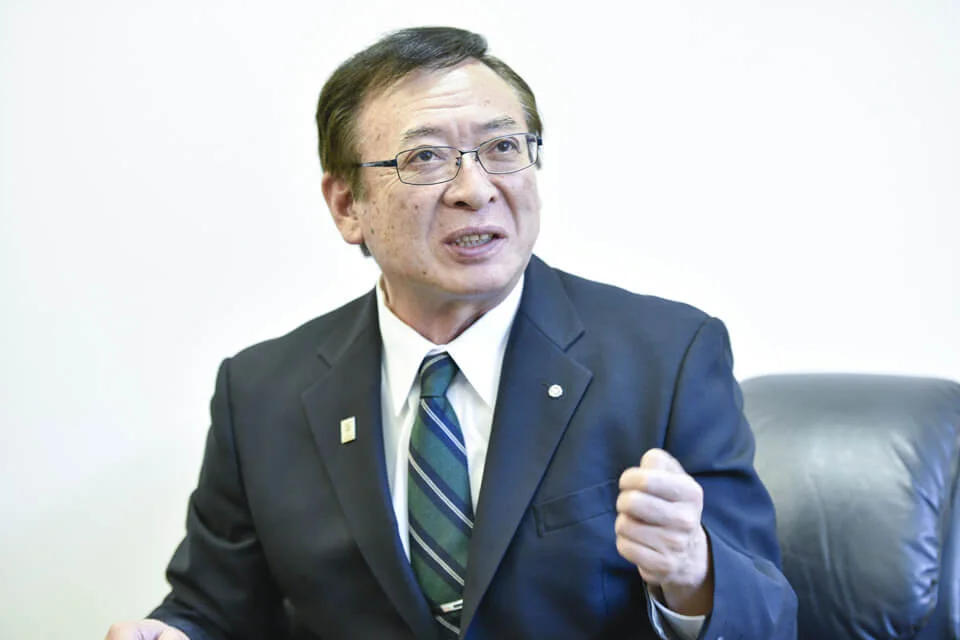
Sugiyama:Lifevision is used by a wide range of municipal governments as tools for communications between governments and their local people. In particular, it’s used frequently as ways to communicate disaster and its prevention information. I hear that you also saw Lifevision as a way to upgrade the existing community wireless system when introducing Lifevision in Ine town.
Yoshimoto:Our community wireless system had served us well for many years as an important way to communicate important information to the people in our town, but it has some shortcomings. For example, you cannot check back the announcement once you fail to hear it when it’s made, and its application is too limited for the cost. We have been worried about these issues for some time now.
Furthermore, we had to digitalize our community wireless system by the policy change of the national government some years ago. We found that we could not solve any current problems of the system while the initial cost projections got enormous. Therefore, I asked my officials to search for better tools in place of our existing community wireless system.
Sugiyama:And that’s when you found out Lifevision?
Yoshimoto:Yes. I think your salespeople are pretty slick, because they won us over easily [laughs]. However, we were grateful for the opportunity to learn about your product, as it not only helped us reduce the costs greatly but also can be used for a wide range of new purposes other than disaster prevention. When I saw Lifevision, I knew instantly that it was the system for us.
We initially sent my officials team to Naoshima town in Kagawa Prefecture, where the system was already in use, to see how it worked.
Sugiyama:Naoshima town adopted Lifevision in 2014 and has installed it in all of their households. They have put the system to really good use, making them a model case in terms of platform utilization.
Yoshimoto:Report presentation of my officials’ team was very impressive. In Naoshima, Lifevision centralized the notification from the town office including not only disaster prevention information but also notice of regional events or of vaccination, and the town’s people can check them whenever they want. Furthermore, I felt that Lifevision is an excellent system for town office to receive the information from town’s people. I thought again that I had no reasons not to utilize Lifevision for my town after I heard my officials talking positively about how it had been utilized in Naoshima.
Sugiyama:I can clearly remember even now just how enthusiastic you and your officials were about adopting our system when we met. Was anyone in your government opposed?
Yoshimoto:Not a single person. I’m not trying to flatter you when I say that we saw no disadvantages in switching the conventional system to Lifevision after we considered everything about it such as its cost, its convenience, and its future potential through the addition of new features. At least no one hesitated about using it instead of the community wireless system. As it would solve our problems and provide plenty of added value, there was almost no debate on whether or not to adopt it, and we were enthusiastic and focused on its potential uses from the very beginning of our discussion.
Benefits and improvements for users
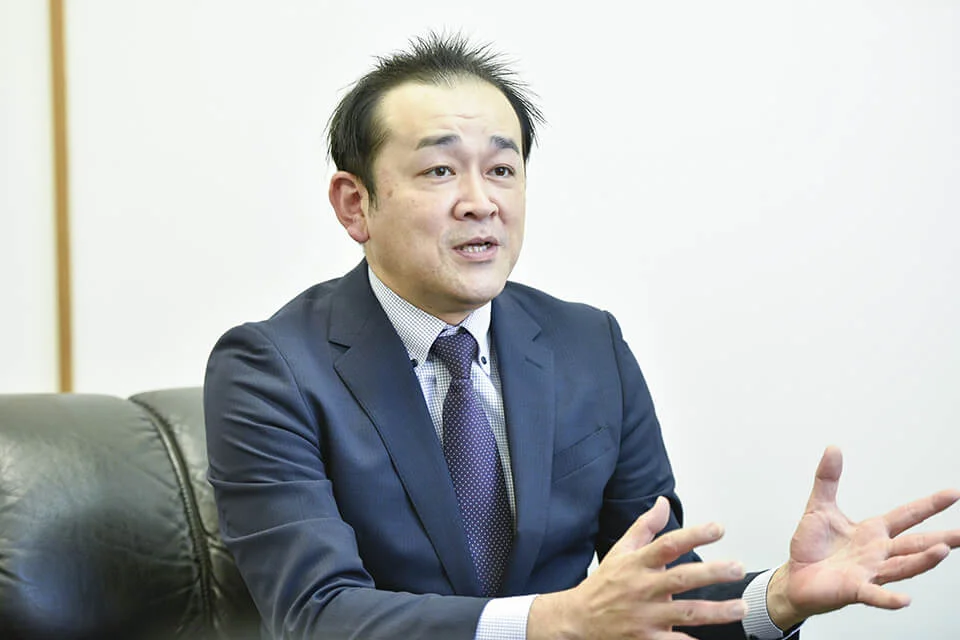
Sugiyama:It’s been about a year and a half since Ine town adopted Lifevision. What changes have you noticed there?
Yoshimoto:Rather than any huge, dramatic change, I’ve found that Lifevision has been naturally fit for our daily lives. We utilize Lifevision to communicate various daily notices, such as notices of trash days, large and small meetings and amount of fish catches in fishing harbor in the morning in addition to disaster prevention information.
Sugiyama:In response to your town’s request, we developed your system with communication features which allow information to be personalized and distributed on a household-by-household basis. This enables your system to communicate notices of vaccinations, health checkups and so forth only to households that need them. Has it worked well for you?
Yoshimoto:This communication features have been very convenient and useful, because it would be stressful to receive endless unnecessary information for their receivers. There are also many notices for senders to feel free to communicate information by limiting the scope of the receivers, such as school-related information which depends on the school district.
Information has no meaning when it is collected and communicated only. It must be arranged properly according to its object to be reached to the proper receivers, and digital tools help us do it very easily. However, we need to be careful to arrange the information as frequently as we can, otherwise it would rapidly accumulate.
Sugiyama:I occasionally check on the platform’s usage in Ine town, and I’ve seen that you sort information very well. This enables you to share important information in very limited scope. Furthermore, the notices tend to include things like details on end-of-the-year meetings and calls for help with cutting grass in farming fields. I strongly sense the “power as a community” you were talking about earlier.
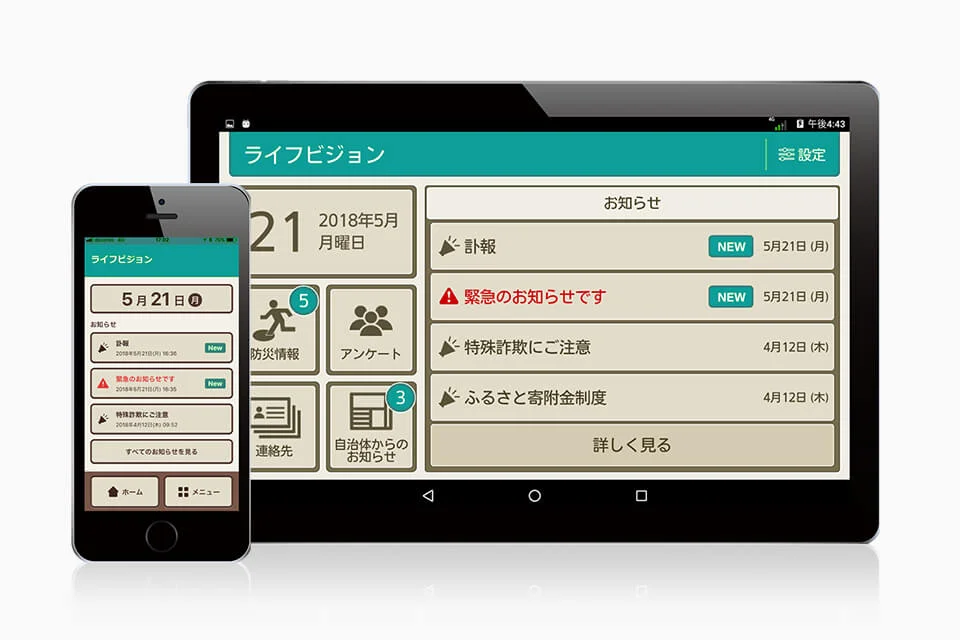
Yoshimoto:Thanks to these efforts, the government and the people now feel much more closely connected with each other. It seems that previously only about 20 percent of our information we had released reached local residents, but with Lifevision about 60 to 70 percent of information is surely reached to them.
As public servants, we have a strong sense that our information is actually reaching citizens, and this motivates us and helps us to do our jobs better. By confirming people’s reactions and various other data via the Lifevision system, we are better able to understand which methods of communicating information have been most effective, what kinds of problems people have that we need to address right away, and so forth.
Sugiyama:Listening to your impressions of our system reminds me just how important it is for people to feel that their ideas are being reliably communicated to other people. If one feels that the information they’re sending out is actually being read and understood, it motivates them to continue sending information and doing more in the future.
Yoshimoto:Exactly. That’s why it’s so important to go out and listen to what our citizens say, and continue to reflect their opinions and needs in our Lifevision-based efforts. Taking inspiration from Amazon founder Jeff Bezos, who champions the idea of a customer-centric company, we want to focus fully on our users and add new functions that will make them more satisfied with our services. We plan to make many more requests to DENSO to improve and add to the system based on user requests, so we’ll be counting on your hard work!
Sugiyama:We don’t feel like our work is done once we’ve introduced a system to the customer, or rather, it’s just the beginning. Based on how local citizens actually use the system, it’s important for us to find new ways to optimize it for municipalities while improving the quality of our services. So, please don’t hesitate to come to us with various requests!
Looking forward, with no regrets
Sugiyama:I’d like to hear your thoughts about Ine town’s future. What do you define the concepts of “prosperity” and “happiness” for the town as?
Yoshimoto:I believe that prosperity and happiness for a town is the environment where everyone can have a good life. The declining population is definitely an issue in Ine town, but I do not think it right to bring people to the town from outside in order to solve it. I would like to do it as Confucius said “If the local people are happy with their lives, people from far away will naturally come.”

Sugiyama:In other words, if the town is a comfortable place to live, then more people will come to live there from outside. I feel the same way.
Yoshimoto:All of small towns with less than 10,000 population face the same challenges of declining birthrates, aging population and depopulation. Many people worry that if the population continues to decrease, the town as a whole will no longer thrive. However, I view things differently—I don’t think that the quality of a town is simply a matter of numbers.

On the contrary, a declining population is not necessarily a bad thing nor a problem. What really matters for citizens is whether firm systems are in place to protect their lifestyles and work. Rather than worrying about Ine town’s population count, I want to make our town a leading innovator among small-population societies.
Sugiyama:What do you mean by “a leading innovator among small-population societies”?
Yoshimoto:It’s a local society which enables people to support each other even with small population in ways not possible in big cities, and thus accumulates the appeal and strengths of rural life. Here, at the northernmost end of Kyoto Prefecture, Ine town has its own unique scenery and culture found nowhere else. No matter how small a town may be, each has its own unique ways of enriching people’s lives. By bolstering such strengths, it’s possible to make one’s hometown a splendid and truly unique place.
Sugiyama:I think that Ine town’s old funaya townscapes are a good example of prosperity rooted in preserving and conveying strengths and traditions. In other words, “innovation” doesn’t have to involve brand-new things. It can also come from cherishing the irreplaceable and important aspects of one’s existing culture and place. That’s my impression while listening to your ideas.
Yoshimoto:Have you ever heard of Doctor Ludwig Guttmann? He established the original sports competition which would go on to become the Paralympic Games. When talking with people who had a physical disability, he would often say, “Don’t worry about what you have lost. Just make the most of what you have left.”
These words had a major impact on me when I heard them for the first time. That’s because I had ever many times focused on what we had lost or did not have, such as money, jobs, and people when I struggled with issues of town’s administration.
I heard Guttmann’s words as if he showed me that, rather than focusing on what you lack, you must focus on and make the most of what you had, and you would find your way forward.
His inspiring words really moved me, made me feel something, and I began to rethink my views and develop new hope. I was able to stop focusing on what Ine town lacked, and devoted myself to making the most of what we had such as our natural scenery, history, culture and local industries.
Sugiyama:That’s truly inspiring!
Yoshimoto:I feel that Lifevision is the tool which can organically connect our citizens with “what we have” and can make the most of it for our daily lives. It’s a very convenient platform as it is, but we still have many more of these connections to make in Ine town and more people’s opinions we want to include, so I’d like to call on you for your continued support.
Sugiyama:We’re here to help anytime! We want to continue working with Ine town to bring together people, things and information via technology and provide an information infrastructure framework that will maximize the power of your community.
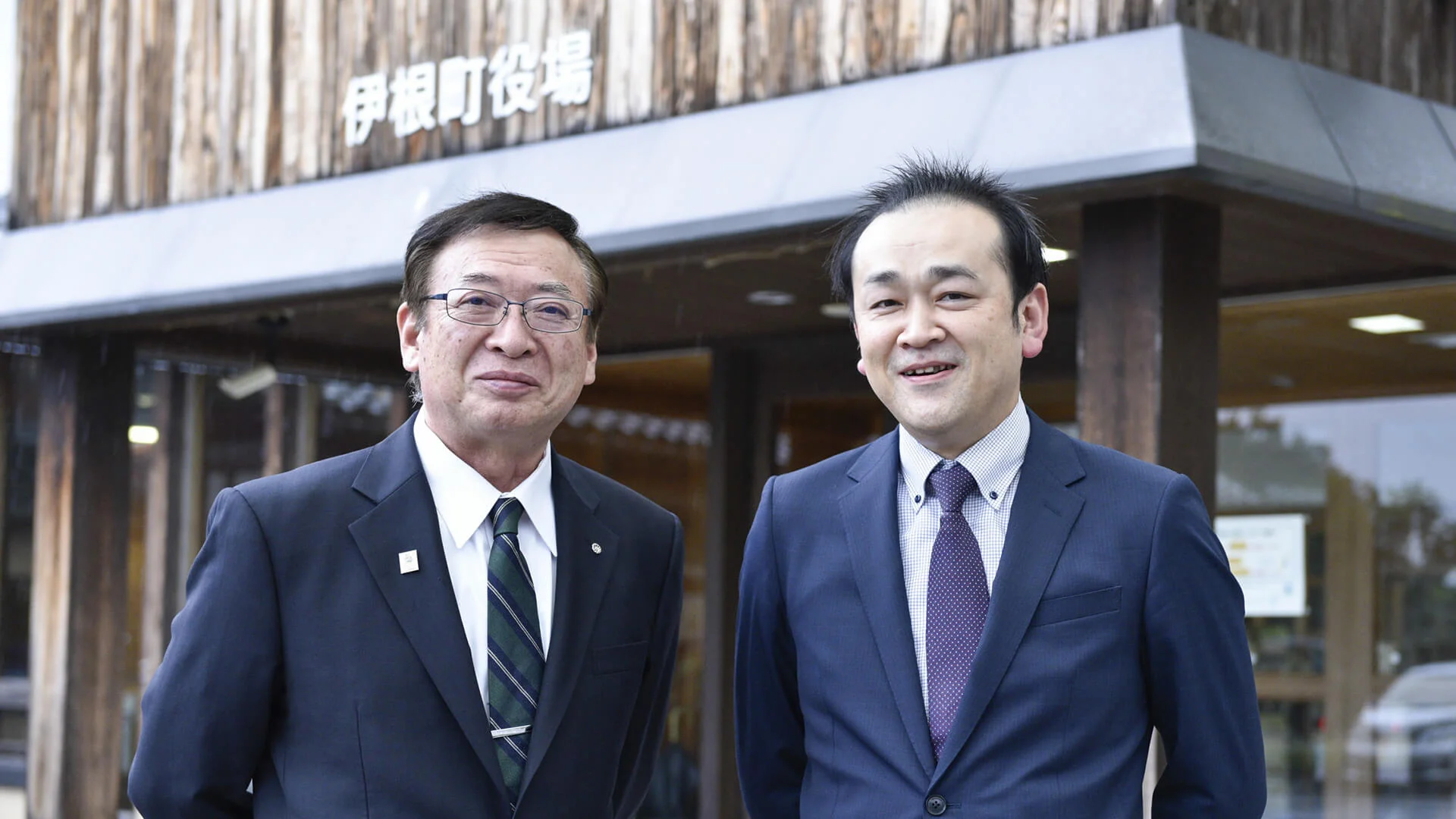
COMMENT
Changing your "Cant's" into "Cans"
Where Knowledge and People Gather.

